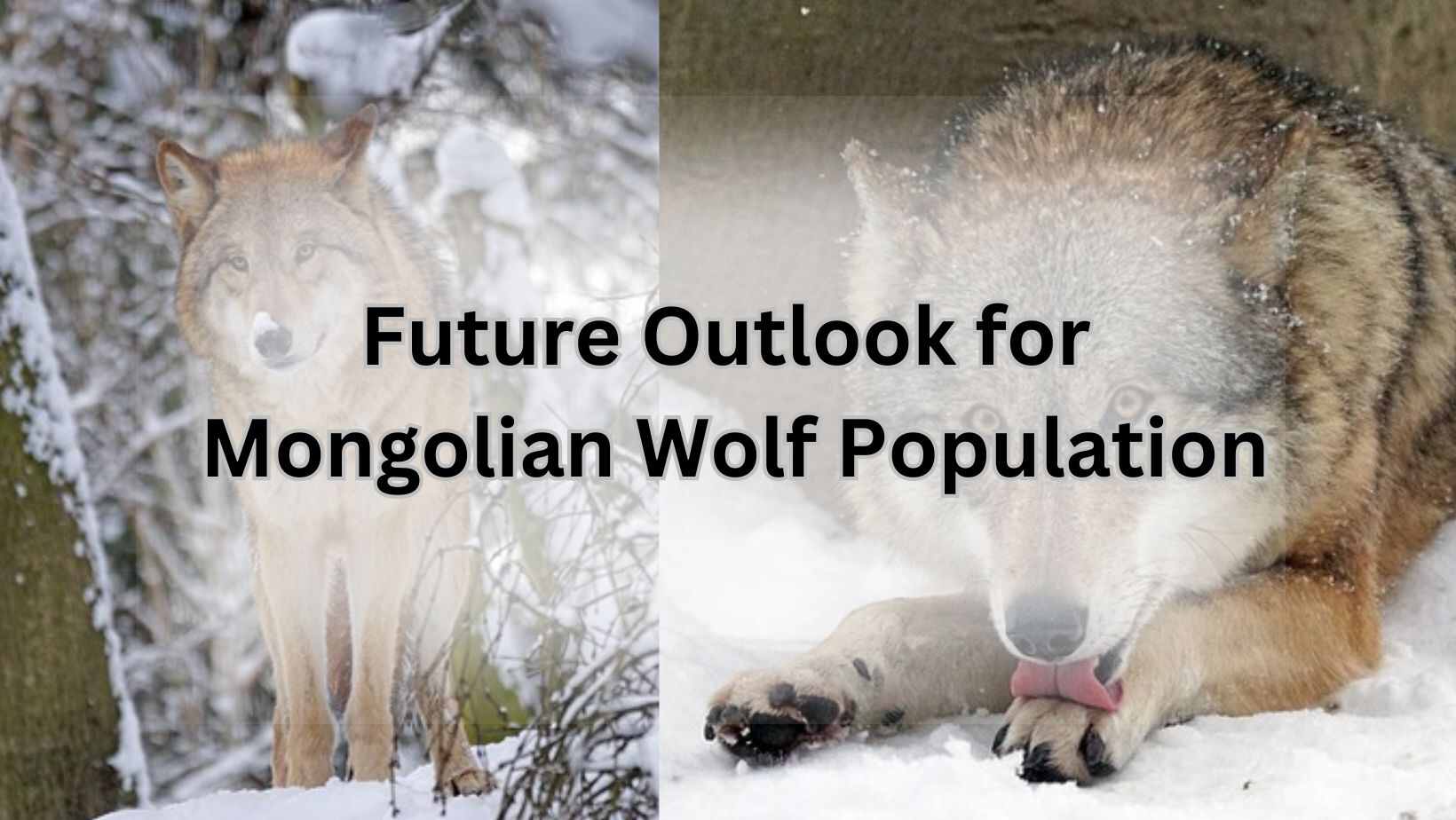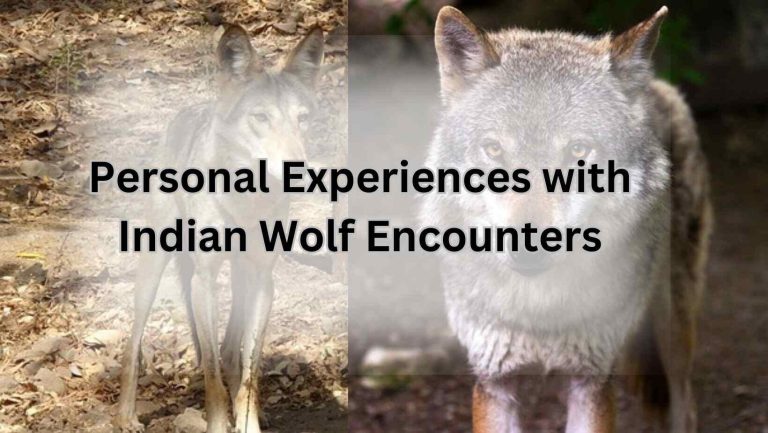Mongolian Wolf: Unleashing the Wild Side of Canid Conservation

Overview of Mongolian Wolf
The Mongolian wolf, also known as Canis lupus chanco, is a fascinating species that roams the vast steppes of Mongolia. Let’s dive into some interesting facts about these majestic creatures!
Habitat and Distribution
Mongolian wolves can be found in the remote and rugged landscapes of Mongolia, where they roam the vast steppes and mountains in search of prey. They are also known to inhabit parts of China and Russia, making them a truly versatile species.
Physical Characteristics
These wolves are known for their beautiful grey fur, which helps them blend into their surroundings. They are also larger than their European counterparts, with strong jaws and sharp teeth that make them formidable hunters.
Behavior and Social Structure
Mongolian wolves are highly social animals, living in packs that are led by an alpha pair. They communicate through howls and body language, working together to hunt and protect their territory. Their strong social bonds make them powerful and efficient predators.
By providing a brief overview of the Mongolian wolf’s habitat, physical characteristics, and behavior, we have set the stage for a deeper dive into the fascinating world of these incredible creatures. Stay tuned as we explore more about the Mongolian wolf’s diet, population, conservation status, and much more!
Importance of Mongolian Wolf in Ecosystem
Let’s talk about the majestic Mongolian Wolf, also known as Canis lupus chanco, roaming the vast Mongolian steppe. These Asian wolves play a crucial role in maintaining the delicate balance of their ecosystem, so let’s dive into why they are so important!
Role in Maintaining Balance
The Mongolian Wolf is like the superhero of the steppe, keeping everything in check. By preying on herbivores like deer and wild sheep, they prevent overgrazing and help maintain the health of the grasslands. Think of them as the ultimate eco-friendly landscapers!
Impact on Prey Population
These wolves are not just hunters; they are also population managers. By controlling the numbers of prey species, they prevent overpopulation and ensure that resources are not depleted. It’s like they have a natural talent for population control!
Interactions with Other Species
The Mongolian Wolf is not just a lone ranger; they interact with a variety of other species in their ecosystem. From competing with other predators like snow leopards to scavenging on carcasses left behind by vultures, these wolves are true multitaskers. They even have been known to form unlikely alliances with foxes to hunt together. Talk about teamwork!
So, next time you think about the Mongolian Wolf, remember that they are not just beautiful creatures but essential players in the intricate web of life on the Mongolian steppe. Let’s give a howl of appreciation for these amazing Asian wolves!
Threats to Mongolian Wolf Population
As a Canid Wild Life Lover with two decades of experience, I’ve witnessed firsthand the challenges faced by the magnificent Mongolian wolf population. These elusive creatures, also known as Canis lupus chanco, inhabit the vast Mongolian steppe and are a subspecies of the gray wolf. However, their existence is threatened by various factors that put their survival at risk.
3.1 Human-Wildlife Conflict
One of the primary threats to the Mongolian wolf population is human-wildlife conflict. As human settlements encroach upon their natural habitat, conflicts arise over territory and resources. Farmers often view wolves as a threat to their livestock, leading to retaliatory killings that decimate wolf populations.
3.2 Habitat Loss and Fragmentation
The rapid expansion of agriculture and infrastructure in Mongolia has resulted in significant habitat loss and fragmentation for the Mongolian wolves. As their territory shrinks, wolves are forced into smaller, isolated areas, making it difficult for them to find food and mates.
3.3 Illegal Poaching and Hunting
Illegal poaching and hunting pose a serious threat to the already vulnerable Mongolian wolf population. Despite legal protections in place, these wolves are still targeted for their fur, meat, and perceived threat to livestock. This illegal activity further diminishes their numbers and disrupts the delicate balance of the ecosystem.
It’s crucial that we address these threats and work towards the conservation of the Mongolian wolf population. By raising awareness, implementing sustainable land management practices, and enforcing anti-poaching laws, we can help protect these majestic creatures and ensure their survival for generations to come.
Conservation Efforts for Mongolian Wolf
Protected Areas and Reserves
Canis lupus chanco, commonly known as the Mongolian wolf, roams the vast Asian steppes, facing various threats to its survival. To protect these majestic creatures, conservationists have established protected areas and reserves across Mongolia. These areas provide a safe haven for the wolves to thrive without human interference, allowing them to maintain their natural behaviors and habitats.
Community-Based Conservation Initiatives
Asian wolves are an integral part of the ecosystem in Mongolia, and community-based conservation initiatives play a crucial role in their protection. Local communities are actively involved in monitoring wolf populations, raising awareness about their importance, and implementing sustainable practices to mitigate human-wolf conflicts. By working together, humans and wolves can coexist harmoniously in the Mongolian wilderness.
Research and Monitoring Programs
Gray wolves in Mongolia are the subject of extensive research and monitoring programs aimed at understanding their behavior, population dynamics, and habitat requirements. Scientists and conservationists track wolf movements, study their diet and hunting patterns, and assess the impact of environmental changes on their population. This valuable information helps inform conservation strategies and ensure the long-term survival of the Mongolian wolf.
As a Canid Wild Life Lover with 20 years of experience, I have witnessed firsthand the importance of conservation efforts for the Mongolian wolf. These magnificent creatures are not only a symbol of the wild beauty of the Asian steppes but also play a vital role in maintaining the delicate balance of the ecosystem. By protecting and preserving their habitat, we are not just saving a species but safeguarding an entire ecosystem for future generations to enjoy. Let’s continue to support conservation initiatives and work together to ensure the survival of the Mongolian wolf.
Adaptations of Mongolian Wolf
When it comes to the Mongolian wolf, also known as Canis lupus chanco or the Asian wolf, this majestic creature has some incredible adaptations that help it thrive in the harsh Mongolian steppe environment. Let’s take a closer look at some of these fascinating adaptations!
Hunting Strategies
The Mongolian wolf is a skilled hunter, relying on both solo hunting and cooperative pack hunting strategies. These wolves work together to take down larger prey such as wild sheep and gazelles, showcasing their impressive teamwork and coordination. Their hunting prowess is truly a sight to behold!
Camouflage and Stealth
One of the key adaptations of the Mongolian wolf is its ability to blend into its surroundings with its gray fur, allowing it to move stealthily through the grasslands of Mongolia. This camouflage helps the wolf sneak up on unsuspecting prey and avoid detection from potential predators.
Physiological Adaptations for Survival
Surviving in the harsh Mongolian landscape requires some serious adaptations, and the Mongolian wolf has them in spades. From its thick fur coat that keeps it warm during the frigid winters to its powerful jaws and sharp teeth for tearing through tough prey, this wolf is a true survivor.
So, next time you find yourself marveling at the beauty of the Mongolian wolf, take a moment to appreciate the incredible adaptations that make this species so unique and resilient. From their hunting strategies to their camouflage and physiological adaptations, these wolves are truly a force to be reckoned with in the wild!
Unique Characteristics of Mongolian Wolf
6.1 Howling Communication
When it comes to the Mongolian wolf, also known as Canis lupus chanco, one cannot ignore their incredible howling communication. These majestic creatures use howling to communicate with other pack members, marking territory, and even as a form of long-distance communication. It’s like having a built-in wolf radio station!
6.2 Pack Dynamics
Living in the vast Mongolian steppe, Asian wolves have a complex social structure within their packs. They work together to hunt, raise their young, and defend their territory. It’s like a wolf version of a tight-knit family, with each member playing a crucial role in the pack’s survival.
6.3 Mating and Reproduction
When it comes to mating and reproduction, Mongolian wolves take their relationships seriously. They form strong bonds with their mates and work together to raise their pups. It’s a beautiful display of love and dedication in the wild.
Overall, the Mongolian wolf, also known as the gray wolf, is an endangered species that deserves our attention and protection. With their unique characteristics, from howling communication to pack dynamics and mating behaviors, these wolves are truly fascinating creatures that play a vital role in their ecosystem.
Interactions with Humans
When it comes to the Mongolian wolf, interactions with humans can vary from folklore and cultural significance to conflicts with livestock owners and even tourism opportunities. Let’s dive into the fascinating world of how these majestic creatures coexist with us mere mortals.
Folklore and Cultural Significance
The Mongolian wolf, also known as Canis lupus chanco, holds a special place in the folklore and cultural traditions of Mongolia. Stories of the Asian wolf roaming the vast Mongolian steppe have been passed down through generations, with the Gray wolf often portrayed as a symbol of strength, loyalty, and cunning. It’s no wonder these creatures have captured the hearts and minds of the Mongolian people for centuries.
Conflicts with Livestock Owners
While the Mongolian wolf may be revered in folklore, conflicts can arise when these predators come into contact with livestock owners. Livestock such as sheep and goats can fall prey to wolf attacks, leading to tensions between conservation efforts and the livelihoods of local farmers. Finding a balance between protecting the endangered species and supporting the livelihoods of those affected is a delicate dance that continues to unfold.
Tourism and Ecotourism Opportunities
On a lighter note, tourism and ecotourism opportunities surrounding the Mongolian wolf have been on the rise. Nature enthusiasts and wildlife lovers flock to Mongolia in hopes of catching a glimpse of these elusive creatures in their natural habitat. From wolf tracking tours to educational programs focused on conservation efforts, there are plenty of ways for travelers to connect with the Asian wolf while supporting local communities.
So, whether you’re enchanted by the folklore surrounding the Mongolian wolf, navigating the complexities of human-wolf conflicts, or eager to embark on a wolf-watching adventure, there’s no shortage of ways to interact with these magnificent creatures. Just remember to tread lightly and respect the delicate balance between humans and wolves in the Mongolian wilderness.
Comparison with Other Wolf Species
Size and Physical Features
When it comes to the Mongolian wolf, scientifically known as Canis lupus chanco, it stands out from its wolf cousins in terms of size and physical features. This majestic creature boasts a thick, luxurious coat that helps it withstand the harsh Mongolian winters. Its fur comes in various shades of gray, providing excellent camouflage in the vast steppes of Mongolia.
Behavioral Differences
Asian wolves, such as the Mongolian steppe wolf, exhibit unique behavioral traits that set them apart from other wolf species. These wolves are highly adaptable and have learned to coexist with nomadic herders in Mongolia. They are known for their intelligence and cunning hunting strategies, making them formidable predators in the wild.
Geographic Range and Habitat Preferences
The Mongolian wolf prefers to roam the vast open spaces of the Mongolian steppes, where it can hunt freely and establish its territory. Unlike their gray wolf counterparts, Mongolian wolves have adapted to the harsh desert-like conditions of the Asian continent, making them well-suited to survive in challenging environments.
Research and Studies on Mongolian Wolf
Tracking and Monitoring Techniques
When it comes to studying the elusive Mongolian wolf, researchers have to get creative. From using radio collars to satellite tracking, these wolves are like furry secret agents that we are trying to keep tabs on. It’s like playing a high-stakes game of hide and seek, but with a lot more science involved.
Genetic Studies and Population Dynamics
Genetic studies on the Mongolian wolf population have revealed some fascinating insights. It’s like uncovering a wolf family tree that dates back centuries. These wolves have their own unique genetic makeup that sets them apart from their cousins in other regions.
Conservation Challenges and Solutions
Conservationists face a tough battle when it comes to protecting the Mongolian wolf. With habitat loss and human-wolf conflicts on the rise, it’s like trying to navigate a minefield while wearing snowshoes. But through education, community involvement, and innovative conservation strategies, there is hope for these majestic creatures.
As a Canid Wild Life Lover with 20 years of experience, I have seen firsthand the importance of research and studies in understanding and protecting the Mongolian wolf population. By tracking and monitoring these wolves, conducting genetic studies, and addressing conservation challenges, we can ensure a brighter future for this endangered species. Let’s continue to work together to safeguard the Mongolian wolf for generations to come.
10. Future Outlook for Mongolian Wolf Population
10.1 Potential Threats and Challenges
As a Canid Wild Life Lover, I can’t help but worry about the future of the Mongolian wolf population, also known as Canis lupus chanco. These majestic creatures face numerous threats and challenges that could jeopardize their survival. From habitat loss due to human encroachment to illegal poaching and climate change, the Mongolian steppe wolf is facing an uphill battle to thrive in its natural environment.
10.2 Conservation Strategies and Recommendations
Conservation efforts are crucial to protect the Asian wolf from extinction. Implementing strict laws against poaching, establishing protected areas, and promoting sustainable land use practices are essential steps to safeguard the gray wolf population in Mongolia. By working together with local communities and government agencies, we can create a safe haven for these endangered species.
10.3 Importance of Public Awareness and Education
Educating the public about the importance of preserving the Mongolian wolf is key to securing its future. By raising awareness about the plight of these magnificent creatures and the role they play in maintaining the ecosystem, we can inspire people to take action and support conservation efforts. Through educational programs, outreach initiatives, and media campaigns, we can ensure that the Asian wolf remains a vital part of Mongolia’s biodiversity.






